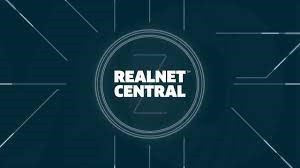Globally, central banks are considering introducing their digital currencies, which would have to be created to serve national policy objectives and problems. Interoperability and integration are essential technological needs when designing and presenting a central bank digital currency (CBDC), particularly when starting a CBDC for retail use. CBDC must be linked to the more significant current and future payment ecosystems to maximize its advantages.
According to the 2022 Worldpay from FIS Global Payments Report, 72% of the world’s population has access to quick payments or will do so soon. Many markets are also updating or replacing their current real-time offerings, particularly those that have modified their corporate real-time gross settlement (RTGS) offerings to support immediate payments, such as Brazil, the United Kingdom, Japan, South Africa, and Mexico. Similarly, the United States and India are launching rival services that will coexist with the current programs.
RealNet™ Central, a service from FIS that enables nations to update or create their real-time payments network, is now available as a central infrastructure payment solution. A Central Bank Digital Currencies (CBDC) Virtual Lab is also being introduced by FIS, enabling nations to test, pilot, and speed up live CBDC deployments. FIS Using real-time payment networks, RealNet™, a new software-as-a-service (SaaS) platform in the cloud, will allow for account-to-account (A2A) transactions between organizations, individuals, and governments. With the help of the new platform, local and international payments will be made more quickly. Users can control every step of the payment process, from initiation through processing, clearing, and settlement. RealNet™ can expedite payments to employees, citizens, clients, and suppliers, regardless of whether they are businesses, insurance firms, government organizations, state lotteries, or gig workers.
RealNet™ Central will speed up the adoption of real-time payments as this transformation takes place by connecting a nation’s enterprises, consumers, financial institutions, and governmental organizations to real-time networks on a national and worldwide level. FIS will assist central banks in the introduction of CBDCs (CBDC). FIS will assist nations in their attempts to incorporate CBDCs into their economies using their high-performance digital money platform, the CBDC Virtual Lab, which was developed in partnership with M10 Networks (M10).
The CBDC Virtual Lab enables central banks, commercial banks, and other financial institutions to test and develop the fundamental ideas behind retail, wholesale, cross-border, offline, and programmable payments. Enterprise-grade technology from FIS, the CBDC Virtual Lab, supports over a million transactions per second with a latency of less than a second.
FIS has also built a decision engine to select the most efficient and cheap solution for each transaction. This engine chooses the network through which to send the money. FIS will now concentrate on expanding RealNet, a platform that employs APIs to connect the business’s other central banking and payments infrastructure to global markets. Global real-time payments will be sped up via FIS’s network of networks. All users’ experiences will be enhanced, and consumers’ and enterprises’ cash flow will be accelerated.




